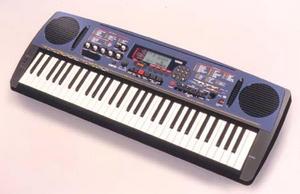Over the course of the Vietnam War, a total of 238 Congressional Medals of Honor were awarded to American forces. Of that number, over sixty percent of the 150 Congressional Medals of Honor awarded were done so posthumously. One of the soldiers that won our country’s most prestigious award for valor made it out of Vietnam alive, although by no means unscathed. He was Medal of Honor recipient Roy Benavidez, a Latino- American hero whose unquestioned bravery and self-sacrifice in the face of incredible danger saved the lives of several of his fellow soldiers.
Benavidez was born on August 5th, 1935, the son of dirt poor sharecroppers, in Lindenau, near Cuero, Texas. He was an orphan soon after, and went to live with an uncle. He dropped out of middle school in order to help the family survive by working in the fields, picking beets and cotton. He faced the prejudices that many Hispanic-Americans dealt with growing up at that time but he overcame them and by the age of nineteen he enlisted in the Army; after completion of airborne school he was sent to Vietnam. He was gravely injured by a land mine in 1964, so badly that doctors feared he would never walk again. If this soldier had called it a career then and there, he would have been hailed a hero. What he accomplished after he recovered fully enough, to his physicians’ amazement, to become a Green Beret, would win Roy Benavidez the Congressional Medal of Honor.
During his second tour of duty in Vietnam, now at the rank of Staff Sergeant, Roy was based near Cambodia, at Loc Ninh, Vietnam. On the morning of May 2nd, 1968, Roy heard a call for help coming over the radio from a twelve man Special Forces Reconnaissance Team that had been inserted by helicopters into a dense jungle area west of the base. The team’s secret mission, approved by President Lyndon Johnson, was to gather intelligence information about suspected enemy activity. This territory was controlled and often patrolled by the North Vietnamese Army. Shortly after their insertion the team ran into heavy enemy resistance and called for an emergency extraction. Three separate helicopters attempted extraction, but they were unable to land because of the withering enemy small arms and anti-aircraft fire. As soon as Sergeant Benavidez heard the distress call he leapt into action, voluntarily boarding a returning aircraft to assist in another attempt to evacuate the men from danger. “When I got on that copter, little did we know we were going to spend six hours in hell,” he later recalled.
Roy quickly assessed that all the team members were now either dead or too severely wounded to make it to the pickup zone; he directed the helicopter to a nearby clearing. Suddenly, he jumped from the hovering helicopter, and sprinted about seventy five meters under constant small arms fire to the injured team. Right off the bat he was wounded in his right leg, his face, and his head. Ignoring these terribly painful injuries, he took command of the situation; repositioning the team members that were able to fight and having them fire on the enemy to enable the loading of wounded and dead team members onto an extraction aircraft. He proceeded to throw smoke canisters to direct the aircraft to the team’s location. Continuing on despite his awful wounds and under the intense fire of the enemy, Roy Benavidez personally carried and pulled half of the wounded team members to the awaiting aircraft. He then provided protective covering fire by running rapidly alongside the copter as it moved to pick up the remaining team members. The enemy continued their onslaught as Roy rushed to recover the body of, and the important classified documents on, the dead team leader. Just as he approached the soldier’s body, Benavidez was severely wounded in the abdomen by small arm’s fire and by grenade fragments entering his back. As this was happening, the aircraft pilot was mortally wounded, causing the helicopter to crash.
Now in critical condition due to his numerous wounds, Sergeant Roy Benavidez secured the classified documents and worked his way back to the overturned aircraft, and grouped the shaken survivors into a defensive perimeter. Under ever increasing enemy automatic weapons fire, along with the threat of grenades, he made his way around the perimeter distributing ammunition and water to the exhausted men. He implored them to keep fighting and began calling in tactical air strikes. He also directed the fire from gunships to keep the enemy down and to allow yet another extraction attempt. He was wounded again, this time in his thigh by small arms fire while performing first aid on a wounded team member. Finally, another extraction helicopter was able to make a landing. Something inside Roy Benavidez kept him going as he stuggled to get his colleagues to the chopper. On his second trip with a wounded man, he was given even more wounds to his head and arms before he killed the attacking enemy soldier. He then continued, under wicked fire, to carry the injured men to the helicopter. As he reached the helicopter, he saw and killed two enemy soldiers who were approaching the aircraft in such a way that it kept the aircraft door gunner from being able to shoot at them. As what little strength he had remaining ebbed away, he made one last journey to the perimeter to make sure that all of the classified material had been either recovered or destroyed, and to bring in the wounded that remained.
He finally allowed himself to be pulled into the helicopter and away they went. Back at the base, he was thought to be dead. As he was being placed into a body bag, he was able to spit into the doctor’s face, just as had spit into the face of the North Vietnamese enemy moments before. He was evacuated to Saigon, where he underwent surgery. He had been wounded a remarkable forty times, yet had somehow survived.
Roy Benavidez was given a Distinguished Service Cross, credited officially with saving the lives of eight men, but a further review of his heroism led to his being recommended for the Congressional Medal of Honor. A witness was needed to verify his actions; in 1980 the man who had first radioed for help that fateful was located, Brian O’Connor. On February 24th, 1981, President Ronald Reagan gave Roy Benavidez his Medal of Honor. Shortly thereafter, the Social Security Administration, as part of “cost cutting moves”, callously tried to terminate his benefits. Retired from the Army since 1976, Roy still had shrapnel pieces in his heart and a punctured lung and was constantly in pain, but he was deemed “able to work.” He testified before the House Select Committee on Aging of how veterans need their benefits to get by; soon after this, his were reinstated.
Roy Benavidez died on November 29th, 1998 in San Antonio, Texas, leaving a wife and three grown children. An army complex at Fort Bragg, North Carolina, an elementary school in Texas and even a Navy non-combatant vessel have been named after this brave man. He is buried at the Fort Sam Houston National Cemetery in San Antonio, Texas. He once deflected praise for his gallantry that day, claiming that, “The real heroes are the ones that gave their lives for their country. I was just doing what I was trained to do.”
In reality, nobody can be trained to have enough regard and compassion for their fellow soldiers that they would willingly risk life and limb for them again and again as Roy Benavidez did that day in 1968. That can only come from within the human soul.






